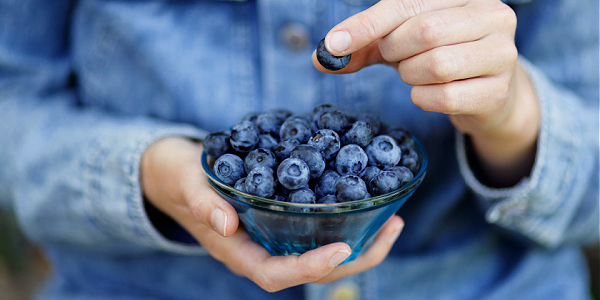
Pizza crust, steak, rice, buffalo chicken, mashed potatoes…
All foods that have been innovatively and creatively crafted with cauliflower.
While there is no denying cauliflower products are on the rise, the veggie has a longstanding history. So how did cauliflower gain so much popularity within the past decade?
Learn more about the trend, along with cauliflower nutrition and health benefits here. (Oh, and do not miss out on tasty recipes offered below!)
Cauliflower's Rise in Popularity
Cauliflower is a cruciferous vegetable like broccoli, Brussels sprouts, and kohlrabi. It belongs to the species Brassica oleracea and is native to the northern Mediterranean and western Europe.
The veggie was introduced to North America in the 1900s and continues to be a harvested food staple today. In fact, the USDA reports 35,070 acres of cauliflower were harvested back in 2014, with 45,500 acres harvested in 2019!
But cauliflower is much more than a steamed side plated come dinnertime…
Cauliflower was touted as the new "It" vegetable in 2017 from Time. And in 2018, Nielsen reported sales of cauliflower products grew 71 percent in dollars in the past year!
The growing popularity and love for cauliflower are likely attributed to a couple of factors. One: The innovative opportunities offered by the food industry, including from Green Giant, Birds Eye, just to name a couple. And two: A natural response to gaining interest in gluten-free, low-carb, and plant-based diets.
Whatever continues to spiral the hype of cauliflower, there is no denying the veggie has quite a notable nutrient profile. It is also a versatile ingredient and can be prepared in many nutritious and delicious ways.
Cauliflower Nutrition Facts, Health Benefits & Risks
Cauliflower is naturally low in calories, carbohydrates, saturated fat, and sodium. The veggie supplies some protein and is a good source of dietary fiber.
Specifically, the USDA's FoodData Central reports 100 grams of raw cauliflower provides the following:
• 25 calories
• 0 grams (g) fat
• 5 g carbohydrate
• 2 g dietary fiber
• 2 g protein
• 30 milligrams (mg) sodium
Cauliflower is also rich in unique plant compounds known as phytochemicals, along with vitamins and minerals. These include folate, magnesium, phosphorus, potassium, and vitamins C and K.
Being nutrient-rich, cauliflower can support health in many ways. However, there are potential risks and disadvantages of cauliflower worth mentioning.
High in Fiber
Dietary fiber is an indigestible plant component. Instead of getting absorbed and used for energy, it passes down the digestive tract and remains relatively intact.
Foods high in fiber, including fruits and vegetables, support digestive, heart, and overall health. Fiber can also play a role in managing both blood sugars and weight.
Diet-Friendly
Cauliflower is a low-calorie and carb veggie dieters may turn to when trying to lose or manage weight. It is a flexible ingredient to cook with and does not pack on carbs like standard pizza and mashed potatoes can.
Beyond weight management, the cruciferous veggie fits naturally into a wide variety of diets. These include vegetarian, vegan, gluten-free, and grain-free diets just to name a few.
Packed with Antioxidants
Cauliflower is rich in antioxidants, chemicals that may prevent or delay cell damage. They also help to lower inflammation in the body.
As a whole, antioxidants have been touted to slow down the aging process and protect against a number of chronic diseases. These include cancer, heart disease, Alzheimer’s disease, and age-related macular degeneration.
Cauliflower is particularly high in glucosinolates and isothiocyanates. These compounds are extensively explored in the fight against cancer, including breast and colon cancers.
Health Risks of Cauliflower
As a whole, cauliflower may manage weight and reduce the risk of chronic diseases when included in a balanced diet.
However, according to WebMD, people with certain conditions may want to talk to their doctor before eating cauliflower. These conditions include:
• Thyroid conditions, as eating in abundance inhibit iodine absorption and hormone production.
• Digestive issues related to gas produced by cauliflower. This can exacerbate symptoms for those with irritable bowel syndrome and other bowel conditions.
• Heart disease, especially if taking blood thinners and recommended to limit vitamin K intake.
All-in-all, the way cauliflower impacts health is on an individual basis.
Cauliflower vs. Broccoli
Raw cauliflower and broccoli look quite similar. But their similarities do not stop there.
Both cauliflower and broccoli are cruciferous veggies and contribute to the recommended daily servings of veggies. Each is low in calories while being packed with similar plant compounds, vitamins, and minerals.
However, there are some slight differences from a nutritional standpoint, including:
• While marginal, cauliflower contains 25 calories per 100 g while broccoli supplies 35 calories per the same portion.
• Cauliflower is also slightly lower in calories from carbohydrates, fiber, and protein.
• Broccoli has greater contents of certain micronutrients, including calcium, folate, iron, and vitamins A, C, E, and K.
Cauliflower may be more flexible to cook with and enjoy mostly related to its milder flavor.
Cooking Cauliflower
While cauliflower can be eaten raw, there are so many ways to cook cauliflower. These include:
• Boiled
• Grilled
• Mashed
• Pureed
• Roasted
• Sautéed
In addition to the diverse cooking methods, the flavor of cauliflower can be transformed with various seasonings. Dress cauliflower florets with a touch of olive oil, salt, and pepper or spice with spices inspired by Indian cuisine.
Different Uses of Cauliflower
From mashed cauliflower with mushroom gravy to cheesy tots, cauliflower can be completely transformed into unique dishes.
Whether you love cauliflower, are looking for ways to sneak or veggies, or fall somewhere in between, give these recipes a try:
• Italian roasted cauliflower
• Mashed cauliflower with mushroom gravy
• Cauliflower gratin with feta and olives
• Creamless cauliflower soup
• Curry roasted butternut squash and cauliflower with chickpeas
• Cheesy broccoli cauliflower tots
• Cauliflower tacos
Cauliflower is truly one nutritious ingredient with so many uses! How do you like to enjoy this versatile veggie?







